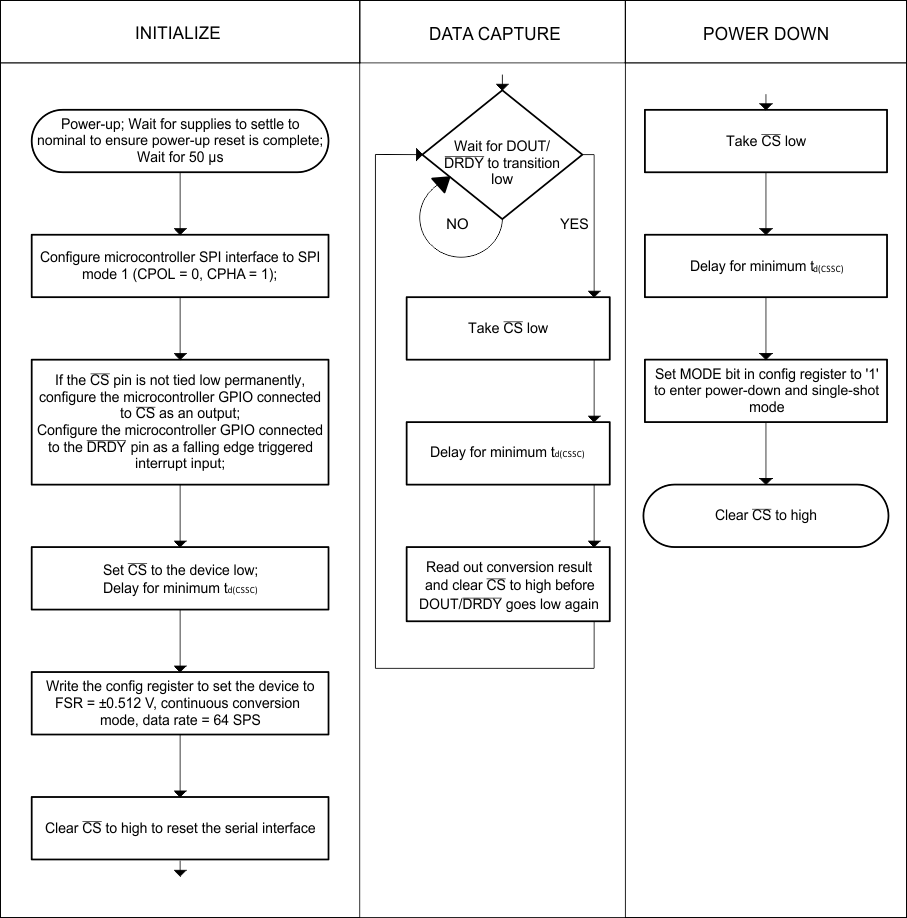JAJSHX5F October 2010 – September 2019 ADS1118
PRODUCTION DATA.
- 1 特長
- 2 アプリケーション
- 3 概要
- 4 改訂履歴
- 5 概要(続き)
- 6 Device Comparison Table
- 7 Pin Configuration and Functions
- 8 Specifications
- 9 Parameter Measurement Information
- 10Detailed Description
- 11Application and Implementation
- 12Power Supply Recommendations
- 13Layout
- 14デバイスおよびドキュメントのサポート
- 15メカニカル、パッケージ、および注文情報
パッケージ・オプション
メカニカル・データ(パッケージ|ピン)
サーマルパッド・メカニカル・データ
発注情報
11.1.6 Pseudo Code Example
The flow chart in Figure 49 shows a pseudo code sequence with the required steps to set up communication between the device and a microcontroller to take subsequent readings from the ADS1118. As an example, the default Config Register settings are changed to set up the device in FSR = ±0.512 V, continuous conversion mode and 64-SPS data rate.
 Figure 49. Pseudo Code Example Flow Chart
Figure 49. Pseudo Code Example Flow Chart